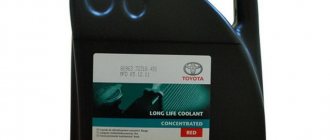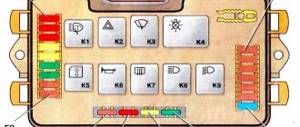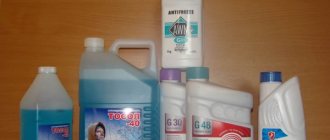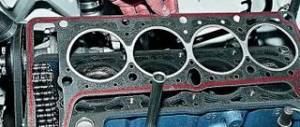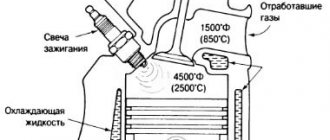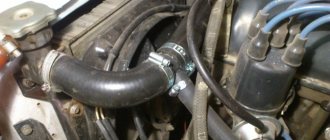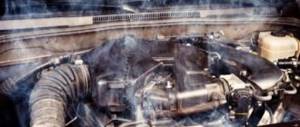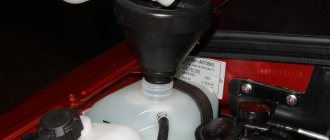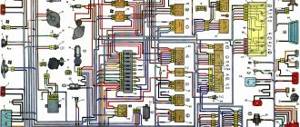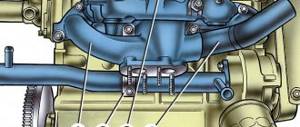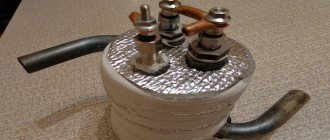The cooling system is an important part of a modern car. Its overheating can cause expensive repairs. That is why during operation of the machine it is necessary to regularly monitor the condition of the cooling system.
Using a car reduces the performance characteristics of engine cooling fluid (antifreeze, antifreeze). This can cause foam to form in the system, which will cause corrosion of the cylinder block, thermostat, radiators and damage to the water pump mechanisms. In this case, nothing will help except high-quality repair of the cylinder block. This is why you should replace the coolant at the intervals specified by the manufacturer.
How to drain coolant
In order to completely drain the coolant from the system without any residue, it is desirable that the front of the machine is lower relative to the rear. For example, the rear can be jacked up a little.
Now let's start draining the old antifreeze before replacing it with a new one. Most car engines have a tap or a special drain plug in their lower part through which the coolant is drained. In addition to the cylinder block, antifreeze will also need to be drained from the radiator and expansion tank.
To do this you need:
- Loosen the expansion tank cap - this will allow the coolant to drain faster.
- Unscrew the drain plug and drain the antifreeze from the engine cooling jacket into a suitable container placed under the drain hole.
- Unscrew the drain valve or lower radiator cap and drain the old coolant from it in the same way.
The pressure of the drained liquid can be adjusted by unscrewing or tightening the cap of the expansion tank. After draining the coolant, be sure to screw all drain plugs back in.
Replacement
Now we can talk directly about how the coolant is drained and new antifreeze is added.
We noted that 7.8 liters of antifreeze are required to fill the entire volume of the coolant tank. But it is best to purchase a 10 liter canister. This is useful in case you spill some of the liquid past the neck, and also if you need to top up the coolant over time.
If you carry out the work in a clear sequence, watch preliminary training video instructions, then replacing antifreeze or antifreeze will become an easy task for you.
- Remove the main motor protection. To do this, there are four fasteners under the engine compartment. Although not all cars have protection.
- Remove the protective cover. It is located in front of the body under the engine.
- Unscrew the cap from the expansion tank.
- We climb into the cabin and open the heater tap all the way. This will prevent some of the coolant from remaining inside the system when drained.
- Prepare a container where all coolant from the system will be drained. A basin or other wide dish is better suited so that nothing spills past.
- There is a drain plug on the radiator. You will find it on the lower left, in close proximity to the radiator.
- Don't rush to drain the coolant. First, be sure to protect the generator from antifreeze. To do this, you can wrap it in plastic and put on a bag.
- Now drain all contents from the radiator.
Article on the topic: Modification of the immobilizer on the VAZ 2110: disabling, reprogramming
- Give yourself access to the drain plug on the cylinder block. To do this, you will have to remove the three bolts securing the ignition module.
- Place the module aside. Underneath it you will find a plug.
- Unscrew the plug and drain the old coolant solution.
- Let the car sit for about 15 minutes. This time should be enough for all the coolant to leave the system. Just remember, the engine must be cold.
- At this stage, you can flush the system if desired and necessary.
- After draining and flushing the system, tighten all plugs.
- Arm yourself with a canister and go to the expansion tank, which is located in the engine compartment. Remove the lid and begin to gradually pour in antifreeze or antifreeze.
- To avoid spilling the mixture, use a funnel. By inserting it into the fill hole, the coolant update procedure will be much easier.
- Be guided by the amount of coolant remaining in the canister. In some situations, an air lock may form in the system.
- To get rid of the plug, compress and release the upper hoses on the radiator.
- When filling is complete, you should have no more than 2 liters of liquid left in the canister.
Removing the airlock
How to choose antifreeze
Before replacing antifreeze, you must first buy it. Oddly enough, this can also cause problems. After all, it comes in different brands, as well as different characteristics, and not every car owner knows which of them are suitable. Here are the important points to pay attention to when choosing a coolant:
- Marking. First, let's look at the conventions. Any antifreeze is marked with a letter and a number. There can be two letters: “A” - ready to be poured into the cooling system, “K” - means a concentrate that requires dilution before use. After the listed letters, the freezing temperature is placed on the Celsius scale - 40, 65 degrees, etc. After this, at the end, there may be the letter “M”, which indicates the presence of additional impurities and additives. Sometimes the label just shows a name and a number.
Antifreeze markings
There is also some “unofficial” but common marking introduced by Volkswagen.
In accordance with it, antifreeze is divided into groups G11, G12 (G12+, G12++) and G13. G11 - mainly green antifreezes, which contain organic and chemical additives;Antifreeze G11
- G12, G12+, G12++ —red antifreezes of various shades, they are almost completely organic;
Antifreeze G12, G12+, G12++
- G13 - mostly purple or yellow antifreezes, more modern and safer.
Antifreeze G13
Not all antifreezes of different markings can be mixed with each other . In any case, the seller will tell you about the product you are buying, so there will be no problems with this.
Mixing antifreeze of different markings
- Manufacturer. You also need to pay attention to this, since you may get a defect that will ruin your engine. To prevent this from happening, you need to buy antifreeze from trusted or at least well-known companies. For example: Liqui Moly, Lukoil, Hepu, Motul, Mobil.
It is recommended to buy antifreeze only from proven brands
- Detection of counterfeits. It often happens that recently purchased antifreeze very quickly became unusable or, more simply put, you came across a fake. But how to choose a good product? Easily! There are basic parameters that are common to all coolants. First of all, this is the color: it must match the markings (the standard color is blue) and be transparent, but only slightly. In addition, the consistency of the substance should be slippery and resemble vegetable oil. You also need to pay close attention to the label. At factories they glue it evenly and indicate GOST and markings on it. By the way, all domestic manufacturers comply with these requirements. The brand must be in line with GOST. In other cases, you will most likely buy a defect.
Original antifreeze (left) and fake (right)
We recommend: Do-it-yourself studding of winter tires
Another important point worth mentioning is the name. The coolant container may be labeled “Tosol” or “Antifreeze”. What is the difference between them? Nothing! Simply, the word “antifreeze” can be used to describe any substance that is capable of removing heat, and antifreeze is produced exclusively for cars and, in particular, for internal combustion engines, since it has anti-corrosion properties, thanks to which the block and cooling system are not damaged.
Precautions and Tips
When replacing antifreeze, the following recommendations and warnings will help you:
- When deciding how much antifreeze you need, keep in mind that the liquid level in the radiator must reach the lower edge of the neck (if coolant is poured into it).
- When working with antifreeze, be extremely careful and fill it away from children. It is advisable to do everything in the fresh air to inhale as little ethylene glycol vapor as possible.
- If liquid gets into an open area of the body, into the eyes or other mucous membranes, immediately wash the area with clean water.
- Do not allow antifreeze splashes to get on the painted parts of the car body. Especially if you use a liquid with added silicates or based on aggressive ethylene glycol. If coolant gets in, it can corrode the paint, so if this happens, wash the surface with plenty of water.
- The toxic components of the liquid are dangerous to the lives of people and animals, so always close the container with the composition.
- If you use the same antifreeze from the same manufacturer, then flushing the cooling system is not necessary. This procedure is only important when switching to a different type of coolant.
- If you are using a concentrate rather than a ready-made liquid, remember the proportions. In summer, you can add more water to the composition (1:1), since in the heat it will evaporate faster. In winter, you cannot add so much water, as under the influence of low temperatures this will lead to freezing of the liquid. As a result, the expansion tank may burst.
Why change the coolant in your car?
Before we move on to talking about the location of the drain plug, it’s worth figuring out whether periodic replacement of antifreeze is really necessary. Yes, this really needs to be done. The reason is quite obvious. Over time, the additives contained in the engine are produced, which reduces the efficiency of the cooler, and the composition no longer gives the desired effect. In turn, overheating of the motor can lead to metal deformation and subsequent problems.
It turns out that draining the old fluid is not just recommended, but necessary, and without fail. In addition to the mandatory replacement in the standard manner, it is also necessary to fill in new antifreeze when installing a new radiator or thermostat. If you have free time and some skills, the car owner can perform the replacement procedure on his own.
When to drain coolant
The procedure for independently replacing antifreeze or antifreeze will not be a problem for any car enthusiast. The liquid is drained in the following cases:
- When installing a new thermostat;
- Before the procedure for replacing a car radiator;
- The time has come for a seasonal replacement of new coolant.
This operation is carried out in two stages, since the liquid is contained in the engine cooling system and in the radiator.
We recommend: Checking/adjusting the ignition timing
Most often, this is something that owners of domestic cars do on their own, so we’ll look at the stages of replacing the fluid using the example of a car we made.
HOW TO FILL CORRECTLY WITH COOLANT
Before properly filling the coolant, it is advisable to flush the system. To do this, pour distilled water into the system and run the engine for about 10 minutes. After this, the water is drained and its condition is assessed. If it is cloudy, the process must be repeated several times.
Filling with coolant
Now let's talk about how to properly pour antifreeze into the cooling system. If you don’t know how much antifreeze is in the VAZ 2114 cooling system, then let us remind you that 7.8 liters of antifreeze or antifreeze are needed. The filling process is carried out in reverse order.
When pouring coolant into the cooling system, air pockets inevitably occur. To get rid of them, do the following:
- Disconnect the hose on the throttle pipe;
- Wait for coolant to appear from this pipe and put the hose in place.
Start the engine and warm it up to operating temperature. If no leaks are found, check the coolant level in the expansion tank. It should be between the min and max marks. This will complete the work of replacing the coolant.
Flushing the engine cooling system
We have already written in some detail about flushing the engine cooling system.
First of all, flushing has two purposes:
- Cleans the system of dirt and sediment that may interfere with heat transfer and coolant circulation.
- Removing the remnants of the previous antifreeze. This operation is necessary because when mixing different coolants, their components may enter into an undesirable reaction, and thereby weaken the anti-corrosion properties of fresh antifreeze.
Even 20-30 years ago, car enthusiasts used various folk methods to clean the cooling system of contaminants. For example, vinegar essence or citric acid was poured into the radiator. Today, there are many special formulations that cope with this task much more effectively.
Special flushing concentrates are best suited for flushing the system when replacing coolant. Before use, they are diluted with water in the proportion indicated on the package. This is the so-called “soft rinsing”.
Its advantage over compounds poured into old antifreeze is that it acts as a preliminary primer. That is, a certain amount of additives from the solution settles on the metal even at the washing stage, and when you fill in fresh coolant during replacement, it will work much more efficiently in the already prepared environment and will not oxidize.
This completes the independent coolant replacement.
When to change?
We have already determined that, from the point of view of the needs of the VAZ 2114, antifreeze is best suited for this car. Although the plant itself has clear recommendations and standards in this regard. If you have a really high-quality antifreeze, which costs more than antifreeze, its performance efficiency will not be inferior to VAZ’s development, and in some places it may even be better.
But first, let’s determine exactly when the coolant needs to be replaced. It all depends on each specific situation, so there are several recommendations in this regard.
- When buying a new car, it should be replaced after every 60 thousand kilometers traveled.
- The standard service life of filled coolant is 2 years. Under normal operating conditions, it is sufficient to change it every two years.
- The coolant must be replaced immediately if its color has acquired a cloudy structure or a rusty tint.
- If the coolant leaked and water was used as a top-up, you need to eliminate the source of the leak and replace all the antifreeze.
- If the engine has been repaired or dismantled, the coolant must be replaced, regardless of its current condition.
Article on the topic: We find and eliminate all malfunctions of the VAZ 2114 generator
What to fill?
A question that interests many is the volume of liquid that should be poured into the engine cooling system of the VAZ 2114. We answer. The volume of antifreeze or antifreeze is exactly 7.8 liters.
Since we agreed that antifreeze would be the best choice, let’s talk about its varieties and determine which one is best to use.
| Type of antifreeze | Peculiarities |
| AK | This antifreeze is a concentrate, so it cannot be poured in its pure form. Diluted with water in proportions of 1 to 1. The freezing point after dilution will be -30 degrees Celsius |
| A65 | Already diluted antifreeze that does not require adding water. The freezing point of the liquid is -65 degrees Celsius |
| A40 | The most common version of antifreeze for the VAZ 2114. Its freezing point is -40 degrees Celsius |
Decide for yourself which of this you will pour into the engine cooling system. Each of the three presented types of coolant has its own characteristics and works equally effectively for the benefit of your car.
Do not forget about the existence of high-quality antifreezes. They cost more, but last about 1-2 years longer.
How to completely drain antifreeze
Draining antifreeze from the cooling system is not very difficult. You just need to know some points. Why do many people have problems in this situation? This is because the system itself is rather large and the pipes run throughout the entire space under the hood. In general, the machine should have at least 2 cooling circles - small and large, which make the structure work as efficiently as possible. Therefore, when draining, coolant may remain in some hard-to-reach places, causing the freshly filled portion to be wasted.
To avoid this, you need to drain the antifreeze correctly. This is done differently on each car, although the course of action is the same:
- The first thing to do is to park the car level and let it stand for about an hour so that the coolant cools down. This is done because when opening faucets or plugs when hot, there is a high risk of burns. There is no need to explain anything here, everything is already clear.
- Then prepare the dishes for the liquid. Please note that after the procedure you can no longer use it for any purpose, since antifreeze is dangerous and resembles a toxin in its nature. The best option would be a cut plastic six-liter bottle. You also need to keep in mind that there are about 7 liters of antifreeze in the system, so just in case, prepare two at once.
- The main places where fluid needs to be drained are the radiator and cylinder head. You should be careful because these parts contain the most antifreeze. To perform the operation, you need to place a container under the radiator tap and open it. It's usually located at the bottom, but again, it's different for every car. Also, instead of a valve, there can be a regular removable plug. To speed up the process, you can unscrew the cap from the expansion tank and the radiator itself, and also press on the pipes with your hand, as if pumping out the liquid.
- Next, you need to screw on the cap of the expansion tank and turn on the interior heater at full power. This will create pressure, which will cause the antifreeze to circulate, causing the remaining antifreeze to flow out through the tap in the radiator. For the best effect, you can start the engine for 1 minute, but not longer.
- All that remains is to drain the antifreeze from the cylinder block. To do this, you need to find a bolt-shaped plug on it. It will be located at the very bottom, under the ignition system. Take the corresponding key and unscrew it. Please note that some blocks may have a faucet, and some may not drain at all. After the procedure, do not forget to check the suitability of the rubber sealing rings and replace them if necessary. To increase the pressure, you can slightly open the expansion tank cap.
- After the antifreeze stops flowing from the block, the draining procedure is completed. Now you need to tighten all the taps with plugs and pour a special cooling system cleaner into the tank (you can simply fill it with distilled water). It is also sold and used to remove dirt and scale. You need to pour into the system the amount of product specified in the instructions for it - usually 300 ml (if you fill in water instead, then 3-4 liters). Then you should start the engine and let it idle for 10-20 minutes. Then the car should sit for half an hour, and after that you need to start it again for a couple of minutes and after cooling, drain everything according to the above action plan, preferably after that by flushing the cooling system with distilled water.
- After flushing, you need to carefully drain the substance from the cooling system, tighten the tap and plug the hole again with the bolt in the block. That's all. All that remains is to pour a fresh portion of antifreeze into the radiator neck and start the engine.
In general, the norm requires 6 liters, however, this figure can vary greatly for each car. It all depends on the size of the power unit. The best option would be to study the operating manual for your machine, which will contain all these details.
We recommend: Correct installation of piston rings
Complete drain of antifreeze
To answer the question of how to completely drain antifreeze from the engine block, it is necessary to take into account the design features of the cooling system. This hydraulic system has separate sections from which it is impossible to drain the liquid by gravity. The coolant partially remains in the cooling channels in the cylinder block, which are located at a certain angle.
To remove such antifreeze residues from the block, you will need to create pressure in the system. The pressure will force out the remaining coolant in the channels, thereby ensuring complete drainage of the antifreeze.
- To implement the task, you need to wait until the liquid has completely drained from the drain hole, after which there is no need to screw in the drain plug. You only need to tighten the cap on the expansion tank. After this, the heater in the car is turned on to maximum and the engine is started.
- Start the engine for just a couple of minutes and carefully monitor the process, since the risk of overheating the internal combustion engine without coolant in the system is very high. Overheating can cause the engine block to warp, seize the engine, or have other devastating consequences. Even if liquid continues to flow out of the drain hole while the engine is running, the engine still needs to be turned off without waiting for complete drainage. After this, the engine needs to be allowed to cool for about 20 minutes, and then the engine starts again, but for no more than a couple of minutes.
- Stopping the flow of antifreeze will indicate that the remaining liquid has drained from the cylinder block. Now the drain plug can be tightened (if the radiator pipes were removed, then they are returned to their place and checked for secure fastening).
How often does antifreeze need to be changed?
Most manuals for car enthusiasts say that antifreeze needs to be changed every 40-45 thousand kilometers. But, in fact, in this matter you need to start from the type of coolant and its classification. For example:
- Class G 11 fluids, intended for cars manufactured before 1996, have a short shelf life of 2-3 years.
- Antifreeze G 12, recommended for cars manufactured from 1996 to 2001, will last longer - 5 years.
- Coolant G 12+, which is used for cars manufactured after 2001, also has a five-year shelf life.
- Liquids G 12++ and G 13 are rarely used in the domestic automotive industry, but they also have a long shelf life.
Healthy! If you mix different types of refrigerants with the same base, then their shelf life is automatically reduced to 2-3 years.
As you can see, a lot depends on the class of the coolant, as well as on the base on which the liquid was made. Ethylene glycol is toxic and takes a long time to decompose, resulting in corrosion on parts of the cooling system. Therefore, it is recommended to change refrigerants of this type more often. Propylene glycol is considered an environmentally friendly product that quickly decomposes, which is why it lasts longer. Therefore, the fluid replacement period can range from 40,000 to 200,000 kilometers.
To determine when it’s time to change the antifreeze, just purchase a special test strip, which you will find at any auto parts store. Another option is to look at the service book of your car; the coolant replacement period must be indicated there.
To replace antifreeze, you need to prepare everything you need: “fresh” liquid, distilled water for rinsing, gloves, a filling funnel and a container for draining. After this, you need to drain the old coolant.

